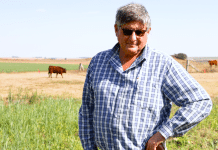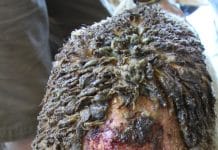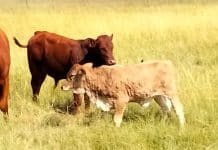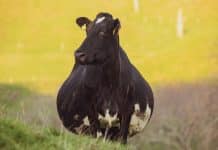
Estimated reading time: 7 minutes
Bush encroachment on natural habitats is a global challenge. Experts believe that, next to Australia, South Africa is the biggest casualty of this problem. Indigenous and alien invasive plants have already taken over millions of hectares of natural environment, making especially livestock farming even more difficult.
In addition, most of these plants are water thieves that complicate the survival of natural plants, restrict water run-off and infiltration, advance erosion, exacerbate veld fires and sometimes poison the soil through the foreign substances they secrete and deposit.
Prof Charlie Reinhardt from the North-West University in Potchefstroom says plants are the anchor of biodiversity in any area. It is therefore important to keep vegetation and biodiversity as healthy as possible.
The bush encroachment process
Bush encroachment usually occurs when human intervention and activities allow invasive species to dominate a plant community. Many of the preferred plants, especially highly nutritious and palatable crops, begin to dwindle once problem plants start dominating the plant community.
The unwanted plants’ degree of dominance is determined by their ability to compete with other plants for water, nutrition, sunlight and so on. The plants that win this battle eventually turn into ‘gluttons’, utilising more of the growth factors than they actually need. This means problem plants will flourish while depriving natural vegetation of their food and water.

Prof Reinhardt believes a distinction must be made between indigenous and alien invasive plants. Indigenous plants that increase in density is mainly an indication of veld deterioration. Although they dominate the veld, they can also be seen as ‘rescue’ plants that persist in times of severe droughts when grass is completely dry.
During times of drought some of these indigenous plants provide nutrition with a high protein content for livestock. Livestock also ingest the pods, thus spreading the seeds. If there is no grass left (due to veld deterioration) to ‘suffocate’ the new seedlings once the rain returns, bush encroachment will progress much quicker.
Selective plant control
Continuous control of these plants is therefore crucial. This can be done either mechanically or with chemicals, but should always be selective. Selective control is easier when done mechanically since specific bushes can be targeted and removed.
Modern equipment that cut and chop thickets are especially beneficial as the chopped wood serves as organic material that can be distributed over the soil, thereby improving the soil’s structure to aid in grass seed germination. Although expensive, it solves the problem immediately and there is no need to remove the dead plants.
With chemical control the chemicals must be sprayed or sprinkled manually around the stem of the plants. This poses a danger in that a sudden downpour shortly after application can wash the chemicals onto other plants and kill them. Aerial application is non-selective and wherever the chemical ends up, everything will die.
Alien invaders
Alien invasive species are a bigger challenge for the environment. They normally have no natural enemies such as insects, pathogens or animals that graze them. This means they have an advantage in terms of growth factors. They tend to multiply naturally and over time begin to dominate a specific area at the expense of the desired indigenous plants.
The scale of the problem is reflected in the fact that millions of hectares of South Africa’s grassland and savannah veld are adversely affected by bush encroachment, which has a detrimental effect on livestock farming. At the same time, the government has spent billions of rand annually over the past decades on projects to tackle the problem. Some battles have been won, but the war continues.
One of the major causes of bush encroachment is the poor grazing management followed since the 1940s, due to input costs that have increased faster than livestock and meat prices. Producers have been forced to keep more livestock to make ends meet. Overgrazing, which has hampered the competitiveness of grass in the ecosystems, has given invasive plants a foothold.
The impact of invasive plants
According to a manual on the control of invasive plants compiled by the Agricultural Research Council in collaboration with various partners, alien invasive plants have numerous adverse effects on the natural environment.
A single large alien invasive tree can utilise between 100 and 1 000ℓ of water per day, which is significantly more than similar indigenous plants. Such plants also often settle in catchment areas and on riverbanks where they disrupt the flow of streams so that less water reaches dams. South Africa loses an estimated 2,5 billion cubic meters of water per year due to invasive plants.
It can also lead to lower agricultural production. If these plants spread across agricultural land, less space is available for crop and livestock production. Livestock is typically produced on uncultivated land where plant control is more difficult. Moreover, plant control is an additional expense for producers and therefore simply adds to the woes of the agricultural economy.

Posing another challenge is the increased risk of veld fires and dense invasive bushes that make firefighting more difficult. Densely growing woody invasive plants provide extra fuel for fires. Some of the species contain flammable compounds that only add fuel to the fire. This drives up the heat, making fires more intense than veld fires on natural vegetation. These fires are more difficult to control, cause greater damage to natural vegetation and can be life threatening.
Habitats infested with invasive plants provide fewer ecosystem services such as clean water and healthy soil. This has a significant negative effect on the sale value of the land because it has a lower production value, and the problem will be expensive for the new owner to solve.
A loss of biodiversity can occur, which reduces the variety of natural species growing in an area. The invasive species push out the natural species and replace them. Globally the loss of biodiversity is largely attributed to damage caused by alien invasive plants. The damage is usually worse in regions that have a unique and rich variety of plants, as in the case of the Cape’s fynbos and flower kingdom.
Many of the alien invasive plants can easily adapt to take advantage of climate change and global warming. In addition, some of these plants, especially legumes, can fix nitrogen, which changes the chemical composition of the soil, and impairs rainwater infiltration and run-off.
The principles of plant control
The core principles for the control of invasive plants are early intervention, successive control efforts and the maintenance of reclaimed ecosystems. Removing invasive plants is the first step. Controlling the plants as soon as they appear is easier and more affordable than removing dense stands of invasive bushes.
Successive control and ongoing maintenance are essential to justify the investments made in deforestation. It is essential to identify the cause of bush encroachment and to correct it. If the invasive species are removed and the correct management route is followed, indigenous species that occur naturally in the ecosystem will once again flourish.
For more information, contact Prof Charlie Reinhardt on 083 442 3427 or email charlie.reinhardt@up.ac.za.








